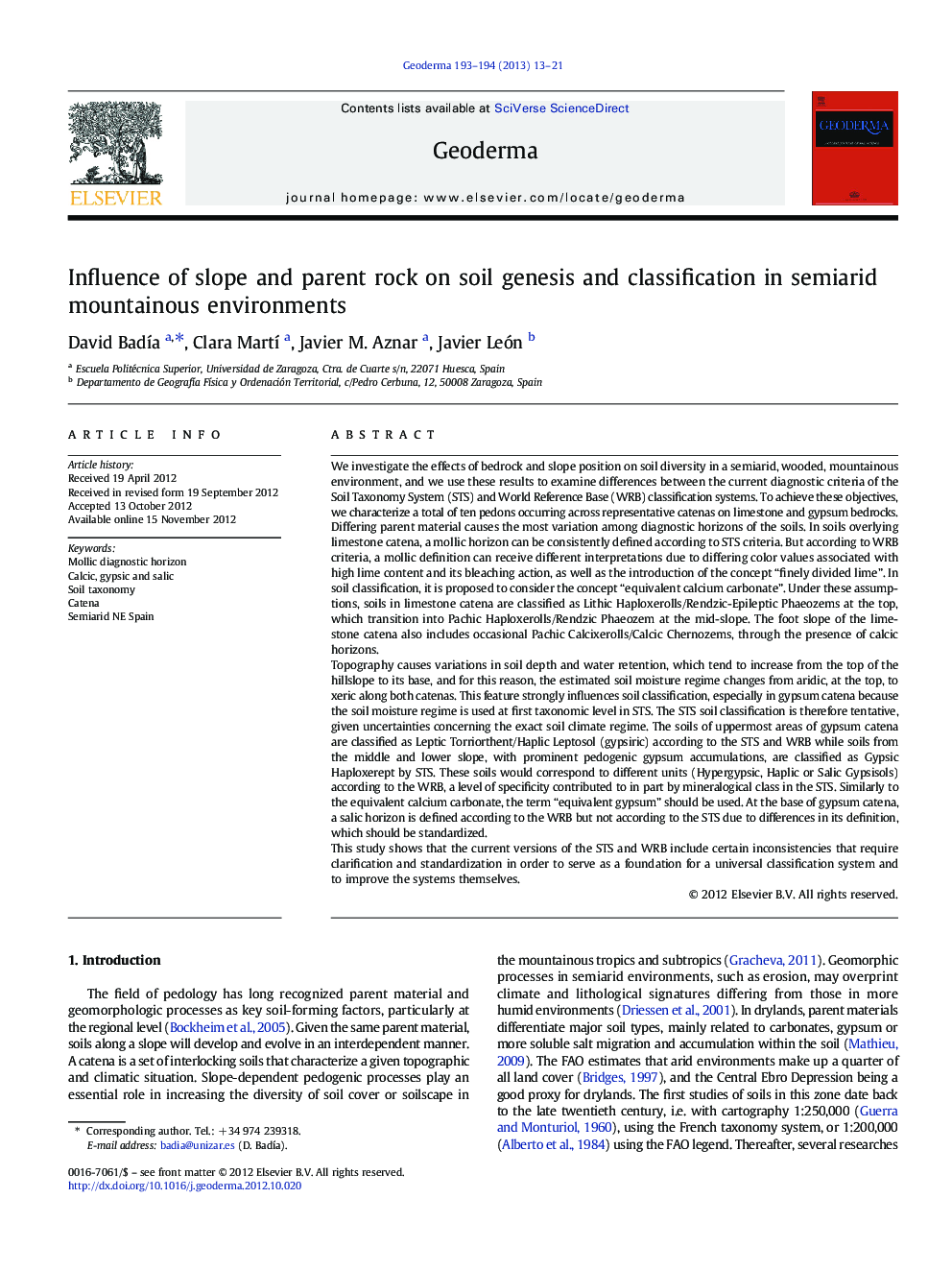| کد مقاله | کد نشریه | سال انتشار | مقاله انگلیسی | نسخه تمام متن |
|---|---|---|---|---|
| 4573663 | 1629490 | 2013 | 9 صفحه PDF | دانلود رایگان |

We investigate the effects of bedrock and slope position on soil diversity in a semiarid, wooded, mountainous environment, and we use these results to examine differences between the current diagnostic criteria of the Soil Taxonomy System (STS) and World Reference Base (WRB) classification systems. To achieve these objectives, we characterize a total of ten pedons occurring across representative catenas on limestone and gypsum bedrocks.Differing parent material causes the most variation among diagnostic horizons of the soils. In soils overlying limestone catena, a mollic horizon can be consistently defined according to STS criteria. But according to WRB criteria, a mollic definition can receive different interpretations due to differing color values associated with high lime content and its bleaching action, as well as the introduction of the concept “finely divided lime”. In soil classification, it is proposed to consider the concept “equivalent calcium carbonate”. Under these assumptions, soils in limestone catena are classified as Lithic Haploxerolls/Rendzic-Epileptic Phaeozems at the top, which transition into Pachic Haploxerolls/Rendzic Phaeozem at the mid-slope. The foot slope of the limestone catena also includes occasional Pachic Calcixerolls/Calcic Chernozems, through the presence of calcic horizons.Topography causes variations in soil depth and water retention, which tend to increase from the top of the hillslope to its base, and for this reason, the estimated soil moisture regime changes from aridic, at the top, to xeric along both catenas. This feature strongly influences soil classification, especially in gypsum catena because the soil moisture regime is used at first taxonomic level in STS. The STS soil classification is therefore tentative, given uncertainties concerning the exact soil climate regime. The soils of uppermost areas of gypsum catena are classified as Leptic Torriorthent/Haplic Leptosol (gypsiric) according to the STS and WRB while soils from the middle and lower slope, with prominent pedogenic gypsum accumulations, are classified as Gypsic Haploxerept by STS. These soils would correspond to different units (Hypergypsic, Haplic or Salic Gypsisols) according to the WRB, a level of specificity contributed to in part by mineralogical class in the STS. Similarly to the equivalent calcium carbonate, the term “equivalent gypsum” should be used. At the base of gypsum catena, a salic horizon is defined according to the WRB but not according to the STS due to differences in its definition, which should be standardized.This study shows that the current versions of the STS and WRB include certain inconsistencies that require clarification and standardization in order to serve as a foundation for a universal classification system and to improve the systems themselves.
Figure optionsDownload as PowerPoint slideHighlights
► Soil type is strongly conditioned by parent material in semiarid environments.
► Soil depth and water availability are regularly slope-dependent properties.
► Some criteria for mollic, gypsic, calcic and salic horizons should be reviewed.
► WRB/STS adjustments are suggested as a basis for a universal classification system.
Journal: Geoderma - Volumes 193–194, February 2013, Pages 13–21